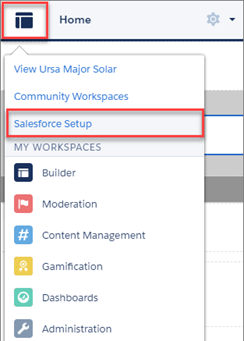

- Einstein platform services pem file lost how to#
- Einstein platform services pem file lost zip file#
- Einstein platform services pem file lost update#
- Einstein platform services pem file lost download#
Salesforce Einstein Language: Intent and Sentiment This is similar to what you might have seen with auto-tagging on Facebook, except that it’s not limited to faces. Instead of just telling you what might be in an image-overall-it actually gives you bounding boxes along with the predictions. If that sounds more like what you’re doing, it would be worth looking into the newly released Einstein Object Detection. There’s also the “multi-label” type of model, which returns all categories, sorted by probability, with the assumption that multiple categories apply-i.e., the probabilities do not add up to 1. So it’s worth experimenting for your particular context so you can know what to expect if you will want to feed it images that don’t fit the categories given to it. However, some pre-built models have categories like Other (for the SceneClassifier model) and UNKNOWN (for the FoodImageClassifier). In other words, the ratings it gives for your sailboat picture being a landline or smartphone still add up to 1, just like they would with legitimate input.

In testing, we discovered that when we sent the above model a picture of a sailboat, it made a best guess between smartphones and landline phones, rather than indicating that it doesn’t seem to be either.

Whatever your use case, you’ll want to explore whether Einstein Vision assumes you’re providing an image that falls into one of the categories you trained it on. Looking at the screenshot and probability values, the model successfully predicted that the iPhone X image is classified under the smartphone category. path= In Postman, without importing, you would need to fill out the header and body tabs as shown below:.Here, can be like either of these examples: This Einstein API endpoint, which is used to create data sets, is next: curl -X POST \
Einstein platform services pem file lost zip file#
We then create a zip file (zip only: 7z does not work, for example) containing these folders. We create two folders, labeling them as smartphones and landline phones, and add images in each folder. In our case, we have two categories: smartphones and landline phones. Simply use a modelId of FoodImageClassifier, GeneralImageClassifier, SceneClassifier, or MultiLabelImageClassifier.) (If this is more time than you want to invest at the moment, you can skip to the prediction section below. Please note that you need at least 40 examples that have already been categorized. The next step is creating our own data set.
Einstein platform services pem file lost update#
Suppose you came across a useful business requirement where you want to distinguish between the smartphone and landline phone based on images and, using that predication, you want to update your lead score or process your use case. The process only needs to be done once to be able to use both Einstein Vision and Einstein Language.
Einstein platform services pem file lost download#
To make Einstein Platform API calls, you first need to create an Einstein API account, download the key, and generate a Salesforce OAuth token using that key. Creating a Salesforce Einstein API Account For the calls themselves, we’ll play with cURL and Postman, but you could also your own back-end prototype or whatever other technology you’re most comfortable with.įrom there, the sky’s the limit.
Einstein platform services pem file lost how to#
In this Salesforce Einstein API tutorial, I’ll show you how to set up an account and make your first AI cloud API calls. Notably this includes offerings of language- and image-recognition services.Īs with other AI cloud solutions, you don’t have to have a PhD to use the heavyweight technologies underneath. They’ve entered the AI market with Salesforce Einstein, their own orchestration of AI cloud services. Not so! Any app, whether Salesforce-related or not, can leverage the sophisticated AI cloud technologies that Salesforce has acquired. When they hear of Salesforce Einstein, they might automatically assume it’s limited to the Salesforce developer specialization. When developers think of using the cloud for AI, they might think of IBM Watson, Microsoft Azure Cognitive Services, Google Cloud, or Amazon AI. Non-Salesforce app developers may be missing out on a hidden gem in the AI world.


 0 kommentar(er)
0 kommentar(er)
